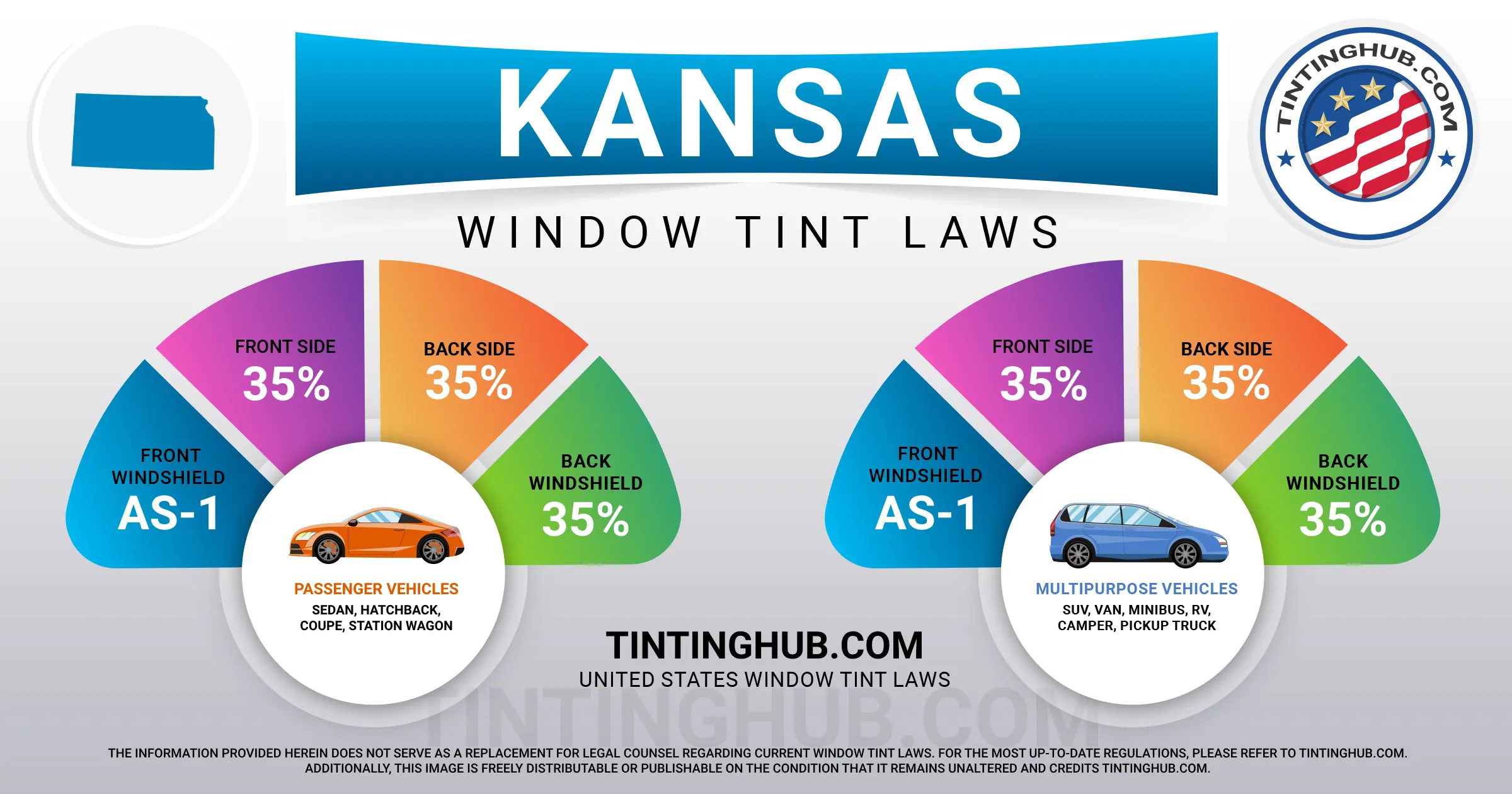Kansas Window Tint Laws (Last Update 2024)

Car window tinting laws in the state of Kansas have a history dating back to 1987, shaping the rules and regulations that govern how dark or reflective your vehicle’s window tint can be. In this article, we will provide you with comprehensive information on Kansas window tint laws, covering everything from tint darkness to reflection regulations.

Window Tint Darkness in Kansas
Understanding the darkness of window tint is crucial to ensure compliance with the law. The measurement used to determine this is VLT, or Visible Light Transmission. Kansas specifies different VLT percentages for sedan cars and SUVs or vans:
Tint Darkness for Sedans
- Windshield: Non-reflective tint is allowed above the manufacturer’s AS-1 line.
- Front Side Windows: Must allow more than 35% of light in.
- Back Side Windows: Must allow more than 35% of light in.
- Rear Window: Must allow more than 35% of light in.
Tint Darkness for SUVs and Vans
- Windshield: Non-reflective tint is allowed above the manufacturer’s AS-1 line.
- Front Side Windows: Must allow more than 35% of light in.
- Back Side Windows: Must allow more than 35% of light in.
- Rear Window: Must allow more than 35% of light in.
Window Tint Reflection in Kansas
In addition to darkness, Kansas law addresses window tint’s ability to reflect light, which can reduce glare and heat inside the vehicle. Here are the reflection regulations:
Tint Reflection for Sedans
- Front Side Windows: No metallic or mirrored appearance.
- Back Side Windows: No metallic or mirrored appearance.
Tint Reflection for SUVs and Vans
- Front Side Windows: No metallic or mirrored appearance.
- Back Side Windows: No metallic or mirrored appearance.
Other Kansas Window Tint Rules and Regulations
Kansas has additional laws and regulations concerning window tinting. It’s important to be aware of these:
- Side Mirrors: Dual side mirrors are required if the back window is tinted.
- Restricted Colors: The use of RED, AMBER, and YELLOW colors for tint is not allowed.
- Certificates: Manufacturers of window tint film are not obligated to certify the film they sell in the state of Kansas.
- Stickers: While state law recommends but does not require stickers to identify legal tinting, it’s advisable to have them.
- Medical Exceptions: Kansas law does NOT allow medical exemptions for special tint usage.
- Penalties: Violations may result in a Class C misdemeanor.
Keep in mind that the interpretation of Kansas tinting laws and regulations can vary by county or place of residence. For the most accurate information, we recommend verifying these regulations with your local DMV or law enforcement authorities.
We last updated our information about window tint laws in Kansas in 2024.
If you come across any information that is not up to date or incorrect, please don’t hesitate to contact us so that we can make the necessary adjustments. We take pride in being a trusted industry leader, dedicated to providing accurate and reliable window tint laws.